At the conference to report on the preliminary results of the 2023 exploration excavation of the Kinh Thien Palace area and the results of excavation and archaeological research from 2011 to present at the Thang Long Imperial Citadel on December 21,
scientists affirmed that the 2023 excavation work has achieved positive results in identifying traces of the Kinh Thien Palace.
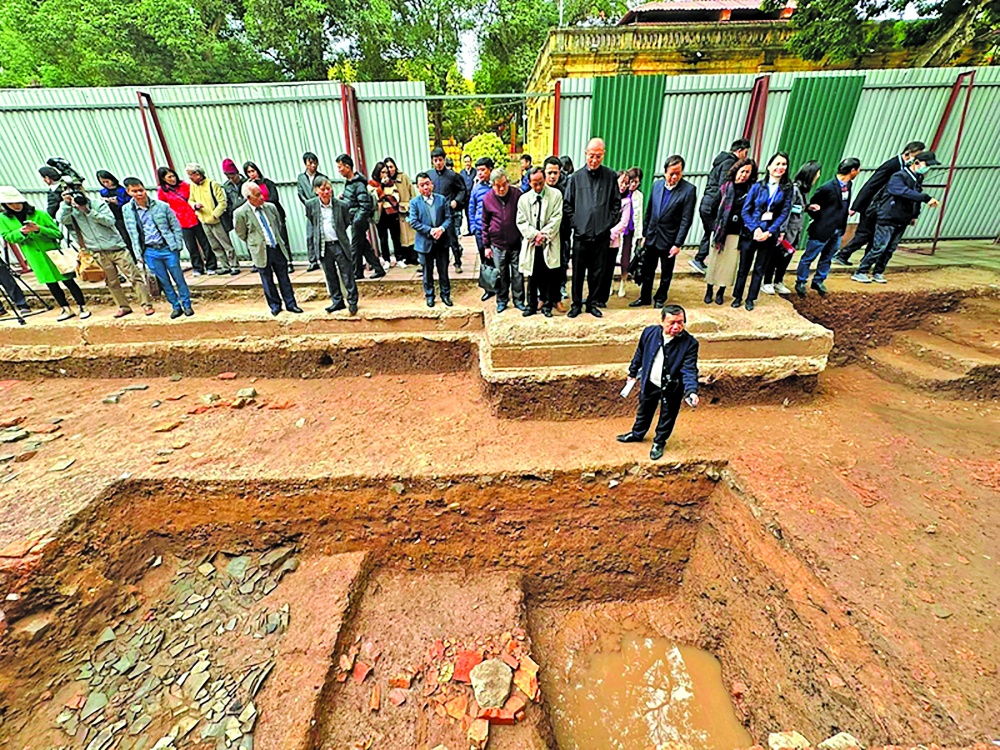 |
| Experts and researchers at the archaeological excavation site south of Hau Lau in the Thang Long Imperial Citadel |
12 opinions of scientists, with many heated and frank discussions, were presented at the workshop. On the one hand, scientists highly appreciated the results of the 2023 exploratory excavation of the Kinh Thien Palace area; the results of excavation and archaeological research from 2011 to present. From the published results, it can be seen that the value of previous documents completely matches the actual values that have been revealed. Surveying at the excavation pit, the international expert team of the
World Heritage Center (UNESCO, ICOMOS) and domestic experts highly appreciated when they saw with their own eyes that the Kinh Thien Palace's foundation still preserved very well the architectural vestiges of many historical periods. This is a highly authentic scientific basis for the research on the restoration and reconstruction of the Kinh Thien Palace.
| The Kinh Thien Palace is the tallest and largest, built in the middle and slightly to the North. In the middle of the South is Doan Mon, the last main gate of the Thang Long Forbidden City. Connecting Doan Mon and the Kinh Thien Palace is the Royal Road, 136.7m long. On both sides of the Royal Road is the Dai Trieu courtyard, with an area of about 12,000m2. The four sides are surrounded by outer walls. Inside the wall is a corridor to avoid rain and sun, interspersed with entrances and exits... |
In 2023, the Thang Long - Hanoi Heritage Conservation Center coordinated with the Institute of Archaeology to conduct exploratory excavations in the northeastern area of the Kinh Thien Palace foundation with a total area of more than 1,000 m2 at 3 locations: the Operations Department, the Kinh Thien Palace foundation and the Hau Lau. In the excavation pit on the north side of the Operations Department house, some parts of the Dan Tri courtyard as well as traces of the Royal Path were discovered following the excavation results in 2022, the architectural foundation of the Ly Dynasty. At the location on the Kinh Thien Palace foundation, exploratory excavation pits were opened directly on the Kinh Thien Palace foundation. Up to now, at the location of the exploratory excavation pits, architectural traces of the Nguyen Dynasty (19th - 20th century), the Le Trung Hung Dynasty (17th - 18th century) and the Le So Dynasty (15th - 16th century) have been discovered. Basically, the excavation has provided two important pieces of information about the structure and foundation of the Kinh Thien Palace during the Le Dynasty and the Le Trung Hung Dynasty, 17th - 18th century. In addition to architectural vestiges, the excavation also found many types of brick, tile, glazed ceramic, and earthenware relics related to the architectural development and life of the Royal Palace here. Regarding the process of management, conservation, restoration and promotion of cultural values at Thang Long Imperial Citadel, Associate Professor, Dr. Tong Trung Tin - Chairman of the Vietnam Archaeological Association said that since Thang Long Imperial Citadel - Hanoi was recognized by UNESCO as a World Cultural Heritage in 2010, the work of management, conservation, restoration and promotion of heritage values has been well implemented according to UNESCO's recommendations and
the Prime Minister 's commitment. In particular, archaeological excavation work has always been focused on. From 2011 to present, after the Central Sector of the Imperial Citadel of Thang Long - Hanoi was recognized by UNESCO as a World Cultural Heritage, the Thang Long - Hanoi Heritage Conservation Center has coordinated with the Institute of Archaeology (Vietnam Academy of Social Sciences) and the Vietnam Archaeological Association to conduct excavations and research in the central area (Kinh Thien Palace area) with a total area of over 10,000 m2. The excavations have achieved results in understanding the outstanding global values of the World Heritage Site of the Central Sector of the Imperial Citadel of Thang Long - Hanoi; at the same time, many new documents of high authenticity have been collected, contributing to the research and restoration of Kinh Thien Palace. The excavation results have identified a rich system of relics and artifacts and initially identified a part of the architectural structure of the Kinh Thien Palace area during the early Le Dynasty (15th century - early 16th century) and the Le Trung Hung Dynasty (17th - 18th century), including: Kinh Thien Palace, Royal Road, Dai Trieu Courtyard, gate, surrounding wall and surrounding corridor. The overall structure of the space is arranged: Kinh Thien Palace in the highest position was built in the middle and slightly shifted to the North. In the middle of the South is Doan Mon, the last main gate of the Thang Long Forbidden City. Connecting Doan Mon and the Kinh Thien Palace is the Royal Road, 136.7m long. On both sides of the Royal Road is Dai Trieu Courtyard with an area of about 12,000m2. The four sides are surrounded by outer walls. Inside the wall is a corridor to avoid rain and sun, interspersed with entrances and exits. The excavations also discovered over 70 gilded wooden architectural structures of a high-rise wooden structure of the early Le Dynasty. A system of blue and gold-glazed dragon tiles is represented as a unique embossed dragon found only in Thang Long and Vietnam. The multi-storey glazed terracotta architectural model records the configuration of a roofing style, a wooden structure of the early Le Dynasty decorated with dragons, lotuses and a bronze card named "Cung nu xuat mai bai" which was a card issued to palace maids who were allowed to enter the inner palace to buy and sell. According to Associate Professor, Dr. Tong Trung Tin, the current state of the excavation work is protected as far as possible. The results of each excavation add more artifacts, demonstrating the connection between periods, which is the connection and the basis for restoring Kinh Thien Palace. Professor, Dr. People's Teacher. Nguyen Quang Ngoc - Vice President of the Vietnam Historical Science Association emphasized that restoring the space of Kinh Thien Palace is an honor and a responsibility. Kinh Thien Palace is the highest symbol of the nation and people. Therefore, after having done a basic research, we must restore Kinh Thien Palace by all means. So that future generations coming to Thang Long Imperial Citadel will know that Kinh Thien Palace is the face of the country. Source: https://thoibaonganhang.vn/khai-quat-khao-co-hoang-thanh-thang-long-huong-toi-phuc-dung-dien-kinh-thien-147754.html





![[Photo] Top players gather at the 2025 Nhan Dan Newspaper National Table Tennis Championship](https://vphoto.vietnam.vn/thumb/1200x675/vietnam/resource/IMAGE/2025/5/23/9ad5f6f4faf146b08335e5c446edb107)





















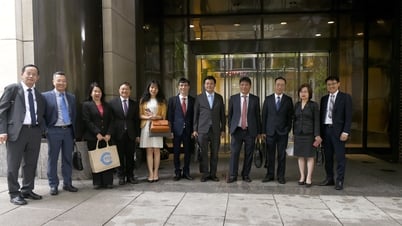

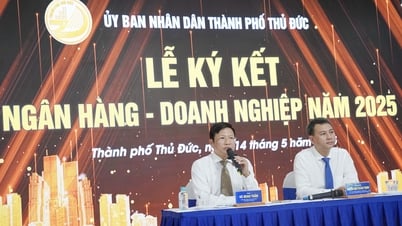


































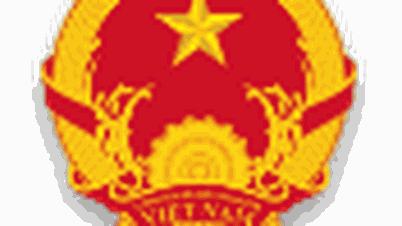

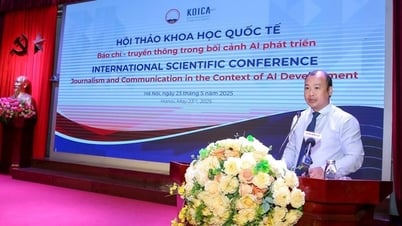
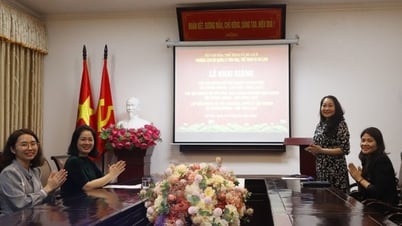


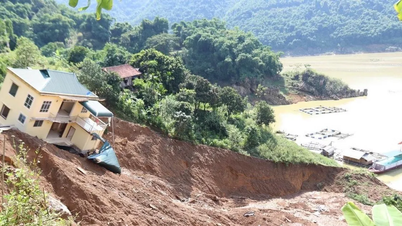

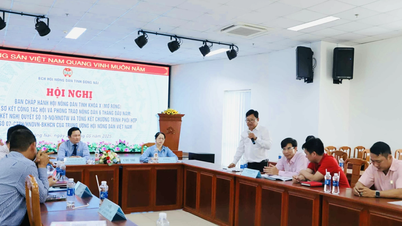
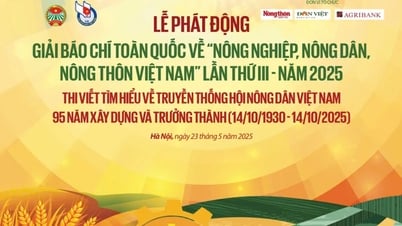

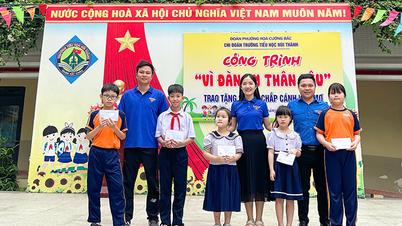















Comment (0)